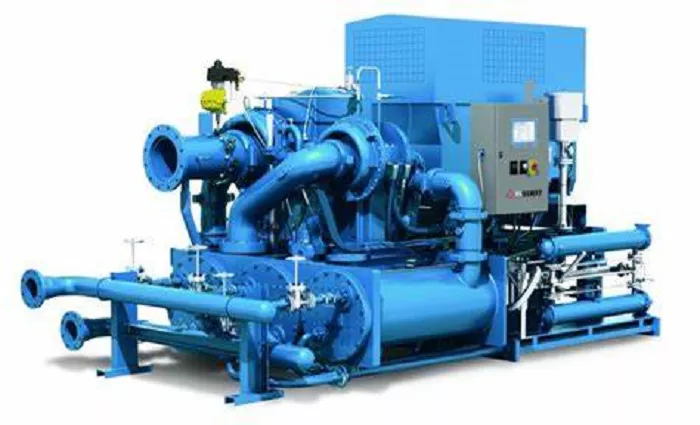Centrifugal compressors are widely used in industries such as oil and gas, petrochemicals, power generation, and refrigeration due to their high efficiency and ability to deliver large volumes of gas at elevated pressures. However, one of the most critical operational challenges associated with these machines is surging, a phenomenon that can lead to severe mechanical damage, reduced efficiency, and even catastrophic failure if not properly managed.
What is Surging in Centrifugal Compressors?
Definition
Surging is an unstable flow condition that occurs when the compressor cannot maintain sufficient discharge pressure, causing a momentary reversal of flow. This instability leads to violent fluctuations in pressure and flow rate, resulting in mechanical vibrations, increased stresses on components, and potential damage.
Mechanism of Surging
Stable Operation: Under normal conditions, the compressor operates along its performance curve, maintaining a balance between flow and pressure.
Surge Condition: When the flow rate drops below a critical threshold (known as the surge limit), the pressure at the discharge side becomes higher than the compressor can sustain. This causes a momentary backflow, followed by a rapid drop in pressure, allowing the compressor to resume flow. However, if the condition persists, this cycle repeats, leading to oscillating flow reversal—the hallmark of surging.
Surge vs. Stall
Stall: A local flow separation within the impeller or diffuser, affecting individual blades or passages.
Surge: A system-wide instability affecting the entire compressor and connected piping.
Causes of Surging
Insufficient Flow Rate
Process Demand Reduction: If downstream demand decreases abruptly (e.g., a valve closing), flow through the compressor drops, pushing it toward the surge limit.
Blocked Filters or Intake Restrictions: Reduced inlet flow due to fouling or blockages can induce surge.
High Discharge Pressure
System Resistance Increase: If discharge pressure rises due to downstream restrictions (e.g., clogged heat exchangers or closed valves), the compressor may not generate enough head to overcome it, leading to surge.
Effects of Surging
Mechanical Damage
Thrust Bearings: Axial forces from flow reversal can overload thrust bearings, leading to premature failure.
Seals and Rotors: High vibrations can damage labyrinth seals, impellers, and rotor assemblies.
Couplings and Shafts: Repeated surge cycles induce fatigue, risking shaft cracking or coupling misalignment.
Performance Degradation
Reduced Efficiency: Surging disrupts smooth flow, increasing energy consumption.
Pressure Fluctuations: Unstable discharge pressure affects downstream processes.
Safety Risks
Potential Explosions: In flammable gas applications, surging can cause dangerous pressure spikes.
Emergency Shutdowns (ESD): Frequent surging may trigger unplanned shutdowns, disrupting production.
Detection & Diagnostics
Pressure & Flow Measurements
Differential Pressure (ΔP) Sensors: Detect flow instabilities near the surge limit.
Flow Meters: Monitor real-time flow rates to identify deviations.
Vibration Analysis
Accelerometers: Detect abnormal vibrations caused by surging.
Spectral Analysis: Identifies surge-induced frequency patterns.
Prevention & Mitigation Strategies
Proper System Design
Surge Margin: Operate compressors with a safety margin (typically 10-15%) from the surge line.
Multiple Compressor Staging: Use parallel or series configurations to enhance flexibility.
Operational Best Practices
Gradual Load Changes: Avoid rapid adjustments that could destabilize flow.
Regular Maintenance: Clean filters, inspect valves, and verify sensor accuracy.
Advanced Control Techniques
Model Predictive Control (MPC): Uses real-time data to optimize performance.
Adaptive Surge Algorithms: Dynamically adjust surge limits based on operating conditions.
Conclusion
Surging in centrifugal compressors is a critical instability that poses significant risks to equipment and process safety. Understanding its causes, effects, and mitigation strategies is essential for reliable operation. By implementing robust anti-surge controls, maintaining proper system design, and adopting advanced monitoring techniques, operators can prevent surging and ensure long-term compressor performance.

